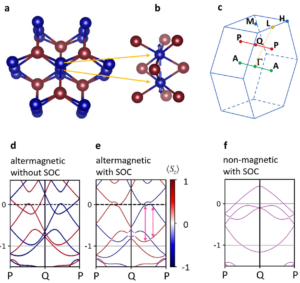A publication with Libor Šmejkal about a tool to check whether a symmetry-compensated collinear magnetic material is antiferro- or altermagnetic has been published in SciPost Phys. Codebases.
Altermagnets (AM) is a recently discovered class of collinear magnets that share some properties (anomalous transport, etc) with ferromagnets, some (zero net magnetization) with antiferromagnets, while also exhibiting unique properties (spin-splitting of electronic bands and resulting spin-splitter current). Since the moment compensation in AM is driven by symmetry, it must be possible to identify them by analyzing the crystal structure directly, without computing the electronic structure. Given the significant potential of AM for spintronics, it is very useful to have a tool for such an analysis. This work presents an open-access code implementing such a direct check.









